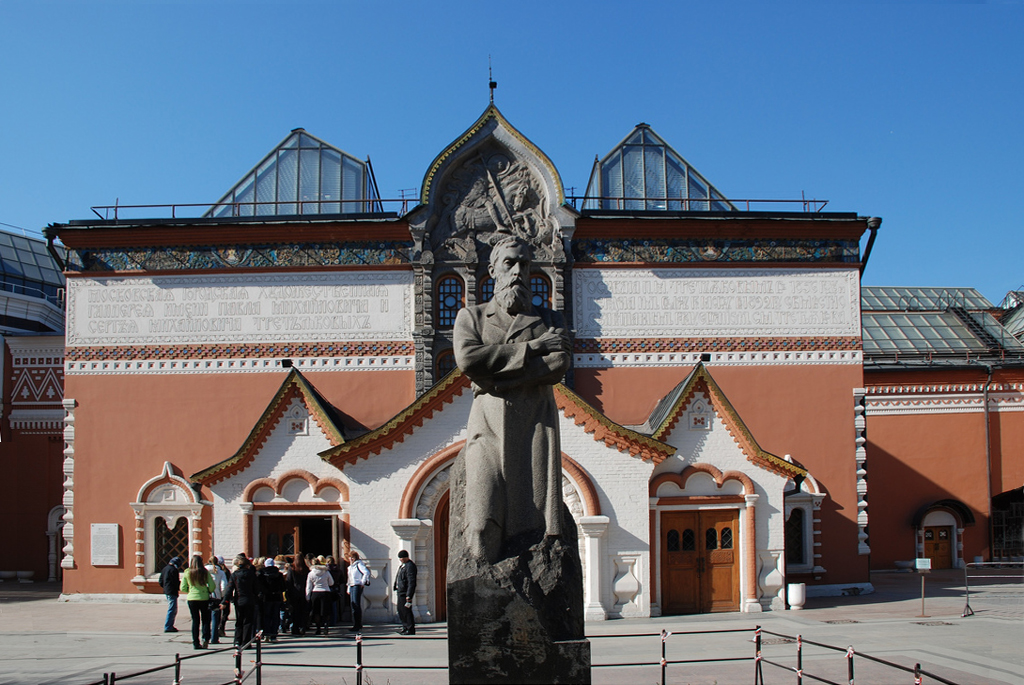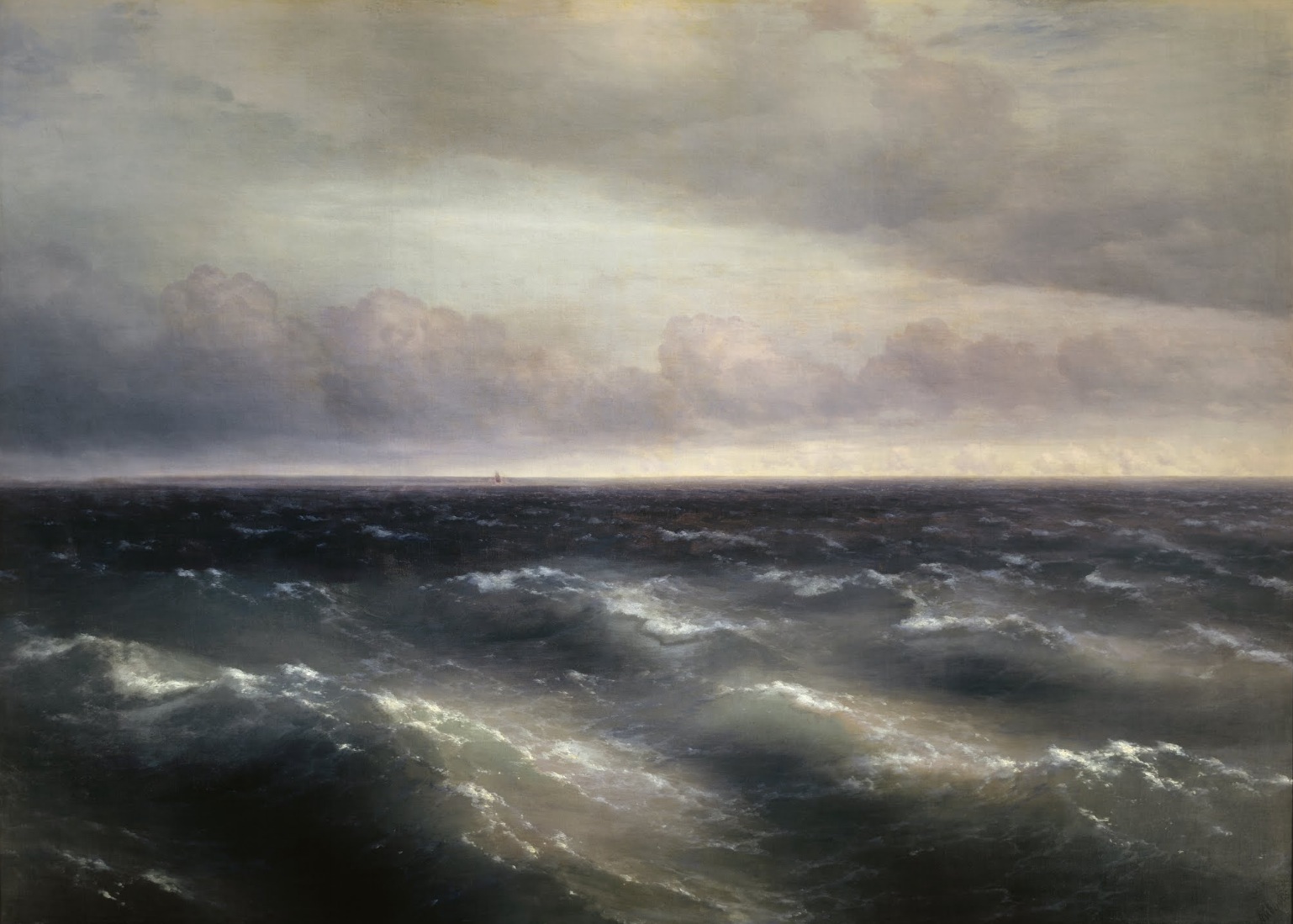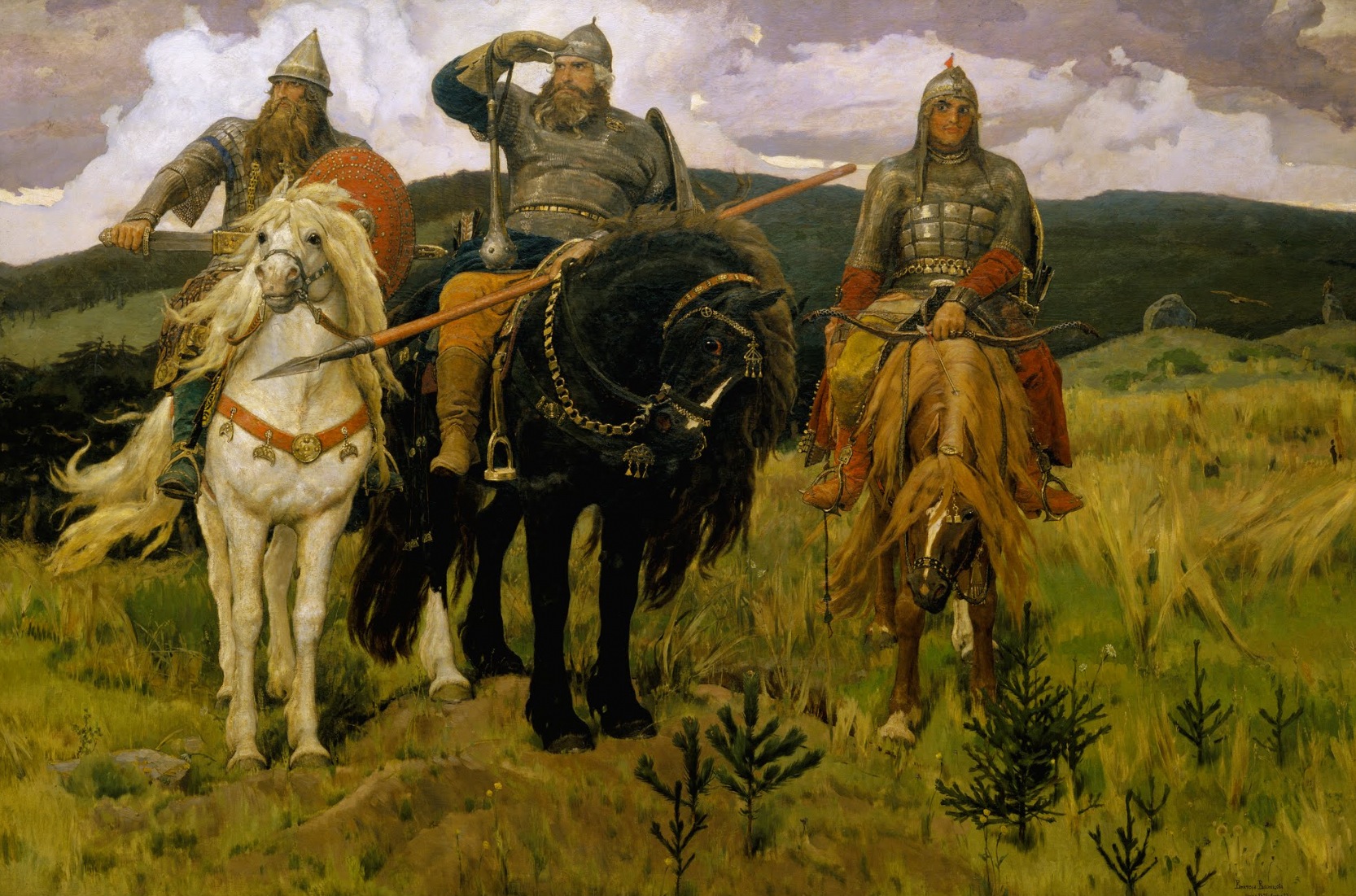.jpg) | @ anonyme - le jugement dernier
.jpg)
The iconography of the «Last Judgment» took shape in Byzantine art already by the 11th century on the basis of texts form the Book of Daniil (VII, 10), the Gospel According to Matthew (XIII, 30; XXV, 31-46), the Apocalypse, and also works by Efrem Sirin, Roman Sladkopevets, Pallady Mnikh and others. The composition is multi-row, complexо. Above in the centre is the semi-figure of God the Father. In circles there are the heavenly forces. To the left is Jerusalem (paradise). To the right is Golgotha, angels winding the scroll of heaven and driving away the gloom and mist from Christ seated on his throne and all-powerful. Below - Christ, the apostles and angels hold court. At His throne are Our Lady, John the Baptist, and Adam and Eve, who are interceding for people. Below the depiction of Christ is an altar with an open book in which are written human affairs. Below the altar is a hand holding scales. Peoples are moving towards the altar: the righteous and sinners. Below, to the right, there is the depiction of the fiery jaws of hell in which sit Satan with the soul of Judas. Emerging from hell is a snake with rings of affliction through which sinners must pass. An angel drives a sinner towards hell. Over hell is earth giving up corpses. All must come before the court - both the living and the dead. In the centre is a red circle with depiction of beasts embodying the empires which have perished: Babylon, Macedonia, Persia, Rome. To the left are the gates of paradise to which the righteous come and fly. Over the gates, in a circle, there is heaven and inside we see Our Lady, angels, and John the Baptist.
<br>anonyme - le jugement dernier 1550 () (E)
The iconography of the «Last Judgment» took shape in Byzantine art already by the 11th century on the basis of texts form the Book of Daniil (VII, 10), the Gospel According to Matthew (XIII, 30; XXV, 31-46), the Apocalypse, and ... |






.jpg)
.jpg)
.jpg)
.jpg)
.jpg)
.jpg)
.jpg)
.jpg)
.jpg)
.jpg)
.jpg)
.jpg)
.jpg)
.jpg)
.jpg)
.jpg)
.jpg)
.jpg)
.jpg)
.jpg)
.jpg)
.jpg)
.jpg)
.jpg)
.jpg)
.jpg)
.jpg)
.jpg)
.jpg)
.jpg)
.jpg)
.jpg)
.jpg)
.jpg)
.jpg)
.jpg)
.jpg)
.jpg)
.jpg)
.jpg)
.jpg)
.jpg)
.jpg)
.jpg)
.jpg)
.jpg)
.jpg)
.jpg)
.jpg)
.jpg)
.jpg)
.jpg)
.jpg)
.jpg)
.jpg)
.jpg)
.jpg)
.jpg)
.jpg)
.jpg)


 in Kursk Gubernia 1880-1883 ().jpg)
 in Kursk Gubernia 1880-1883 ().jpg)
 in Kursk Gubernia 1880-1883 (detail 1).jpg)
 in Kursk Gubernia 1880-1883 (detail 1).jpg)
 in Kursk Gubernia 1880-1883 (detail 2).jpg)
 in Kursk Gubernia 1880-1883 (detail 2).jpg)
 in Kursk Gubernia 1880-1883 (detail 3).jpg)
 in Kursk Gubernia 1880-1883 (detail 3).jpg)
 in Kursk Gubernia 1880-1883 (detail 4).jpg)
 in Kursk Gubernia 1880-1883 (detail 4).jpg)
.jpg)
.jpg)
.jpg)
.jpg)


.jpg)
.jpg)
.jpg)
.jpg)
 1832 ().jpg)
 1832 ().jpg)
 1832 (detail 1).jpg)
 1832 (detail 1).jpg)
 1832 (detail 2).jpg)
 1832 (detail 2).jpg)
 1832 (detail 3).jpg)
 1832 (detail 3).jpg)
.jpg)
.jpg)
.jpg)
.jpg)
.jpg)
.jpg)
.jpg)
.jpg)
.jpg)
.jpg)
.jpg)
.jpg)
.jpg)
.jpg)
.jpg)
.jpg)
.jpg)
.jpg)
.jpg)
.jpg)
.jpg)
.jpg)
.jpg)
.jpg)
.jpg)
.jpg)
.jpg)
.jpg)
.jpg)
.jpg)
.jpg)
.jpg)
.jpg)
.jpg)
.jpg)
.jpg)
.jpg)
.jpg)
.jpg)
.jpg)
.jpg)
.jpg)
.jpg)
.jpg)
.jpg)
.jpg)
 ().jpg)
 ().jpg)
 (detail 1).jpg)
 (detail 1).jpg)
 (detail 2).jpg)
 (detail 2).jpg)
 (detail 3).jpg)
 (detail 3).jpg)
 (detail 4).jpg)
 (detail 4).jpg)
.jpg)
.jpg)
.jpg)
.jpg)
.jpg)
.jpg)
.jpg)
.jpg)
.jpg)
.jpg)
.jpg)
.jpg)
.jpg)
.jpg)
.jpg)
.jpg)
.jpg)
.jpg)
.jpg)
.jpg)
.jpg)
.jpg)
.jpg)
.jpg)
.jpg)
.jpg)
.jpg)
.jpg)
.jpg)
.jpg)
.jpg)
.jpg)
.jpg)
.jpg)


.jpg)
.jpg)
.jpg)
.jpg)
.jpg)
.jpg)
.jpg)
.jpg)


.jpg)
.jpg)
.jpg)
.jpg)

